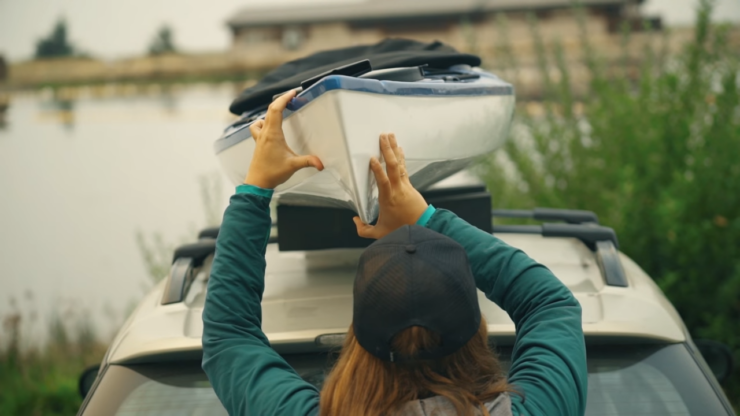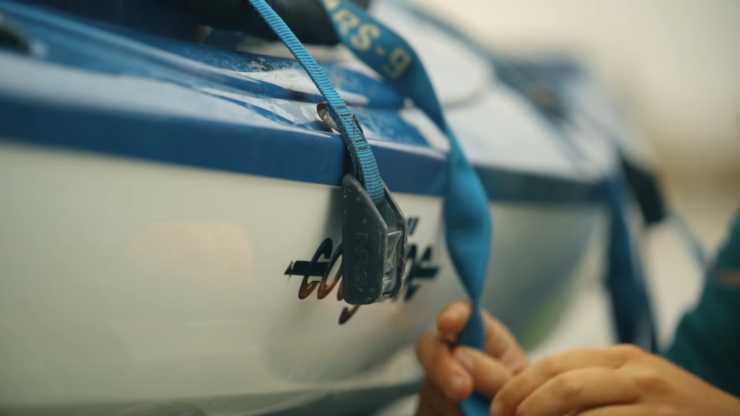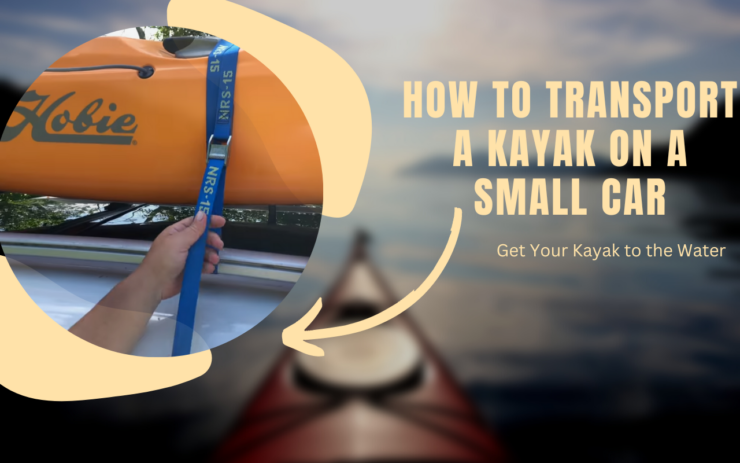Kayaking is a popular hobby that allows people to explore waterways and soak up the beauty of nature while getting some exercise at the same time. You can paddle along lakes, rivers, oceans, and even through rapids, depending on your skill level. Kayaking lets you get close to wildlife and experience nature from a unique point of view. It also provides great opportunities for photography and fishing as well as just a chance to relax and enjoy the scenery.
Depending on the type of kayak and equipment you choose, it can be an inexpensive way to try something new or invest in longer-term paddling adventures. However, not everything is that easy when kayaking is concerned. Certain things like storage can be a nightmare, while transportation to and from the water also tends to give paddlers a rough time. These paddling boats are cumbersome, often heave, and can be too long to easily transport regardless of the vehicle. If you are not prepared well in advance, there will be problems whenever you want to take it out to the water.
Table of Contents
ToggleKayak transportation woes

Kayak transportation problems can range from the inconvenience and bothersome actions to a full-scale safety hazard if the kayaker is unaware of the dangers. Inconvenience comes in the form of long carry distances, awkward carrying, and limited storage options for carrying multiple kayaks at one time. Safety hazards can arise from a lack of proper equipment, inexperienced paddlers, or inexperienced drivers when transporting kayaks on vehicles such as cars and trailers.
Kayaks must be properly secured to their transportation trailer or vehicle to prevent them from shifting during transport, possibly causing injury and/or damage. To insure safety, those transporting kayaks should use proper tie-down straps for securing the boat to its transport vehicle. Additionally, when employing multi-kayak racks, users should make sure that these racks are rated for high enough weight capacity, usually twenty to thirty pounds, and that they are firmly mounted onto the vehicle.
What about smaller cars?
Even larger trucks and the biggest SUVs tend to have issues with transporting kayaks, so what chance do small personal vehicles have? When it comes to transporting a kayak on a small car, the process can be slightly more complex than that of a larger vehicle. This is because extra attention must be taken when loading and securing the boat, as well as any necessary gear, in order to ensure your safety and other drivers’ safety on the road.
Although there are several solutions available for kayaking aficionados with limited-sized cars, this essay will cover the most efficient and safe methods for successfully transporting a kayak on the roof a small car.
First, you will need to decide how many kayaks you will be transporting, one, two, or more. The size of the kayak will also influence the equipment you will need as well as your method of transport. Smaller boats often require fewer carriers or straps and generally pair perfectly with smaller vehicles like hatchbacks or SUVs.
Conversely, longer or wider boats may require additional gear and can be more difficult to maneuver around a small car, potentially becoming too large for it altogether.
Once you have your required equipment ready, such as padding for the roof and carrier rack, begin by clearing your entire car of all valuables first. This prevents items from being damaged during transportation, especially if securing points within the interior are used. All items should be packed neatly before lifting and loading any kayaks onto your vehicle’s rooftop track. Next, secure any equipment necessary for the job.

This includes ladders or anything else you plan on taking along with you on your journeys such as oars and life jackets. Proper positioning and locking devices, such as tie-downs, ratchets, straps, or bungee cords, onto firmly mounted objects is paramount here in order to prevent them from sliding around while traveling your route.
The next step involves loading (carefully) the kayaks onto your small car’s rooftop racks. If you are using a hard-shell carrier rack, even better. These provide optimum security due to their solid and steady form factors but do add extra weight upon installation which could damage weaker points on light weighted cars like hatchbacks or mini-vans.
To reduce bulkiness, yet still maintain a secure foundation, utilize an inflatable rack instead for both singles and doubles. Such an apparatus offers plenty of customization options due to adjustable strapping systems, provides superior cushioning between the boat hull and the roof contact points and they also do not weigh nearly as much as hard carriers, typically just over 5 pounds or 2 kg.
Last but not least, you have to test everything out before leaving home! Just run through each piece one by one ensuring each is properly secured and nothing slides freely around. This also allows time to readjust those tie-down points if needed without risking cargo loss mid-journey. Once everything appears satisfactory you are free to drive to the water and hit the waves with confidence knowing full well everything above and in between has been accurately readied according to specifications outlined in this guide before departure.
Conclusion and Takeaways
As you can see, it is not so easy to own and handle a kayak. Despite being arguably the best water-based activity out there, there are plenty of obstacles to take care of. Luckily, once you do it a few times, it becomes second nature. With these steps set forth in mind, we can now understand exactly what needs to take place when transporting a kayak on our beloved small cars.
It does not have to be complicated or loaded with unnecessary deductions. Safety does come first but it needn’t be a nuisance, more like something to happily take care of before you leave. Make sure to always remember that there is no substitute for care! And finally, never forget about that pre-trip checklist ensuring everything has been accounted for prior to leaving home sweet home. Go through it one more time while in the car and then hit the road.
Adelaide Gentry, a seasoned kayaking enthusiast and expert, is the driving force behind KayakPaddling.net. With over a decade of experience navigating the world’s most challenging waterways, Adelaide combines her passion for adventure with a deep knowledge of kayaking to provide insightful and practical guidance for paddlers of all levels.
Related Posts:
- 16 Best Kayak For Beginners 2024 - Kayaking Adventure Gear
- Heavy Duty Fishing: 11 Best Rods And Reels For Big Fish 2024
- 15 Best Baitcasting Reel Under $100 2024 - Improve…
- 17 Best Trolling Reels 2024 - Enjoy your Fishing Adventure
- 16 Best Kayak Fishing Paddles 2024 - Affordable Fishing Gear
- 12 Best Motorized Kayak 2024 - Start Your Aquatic Adventure!












